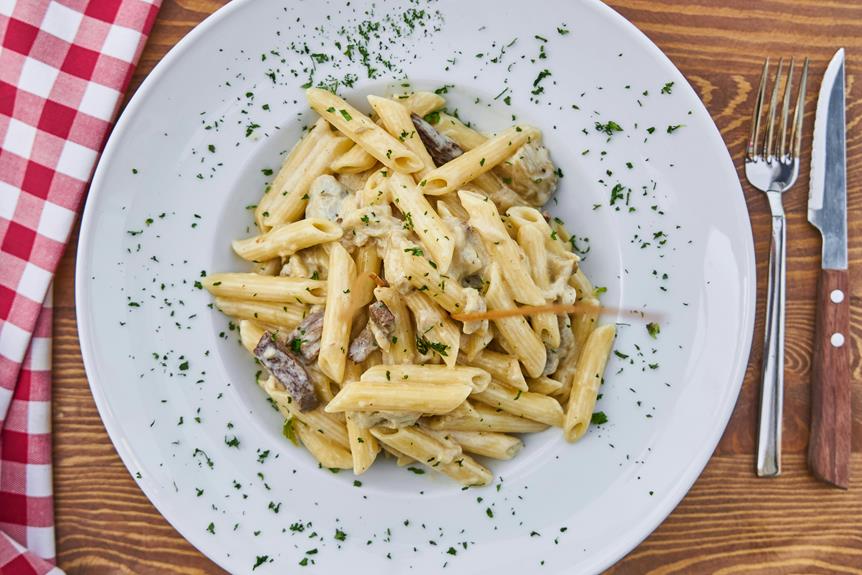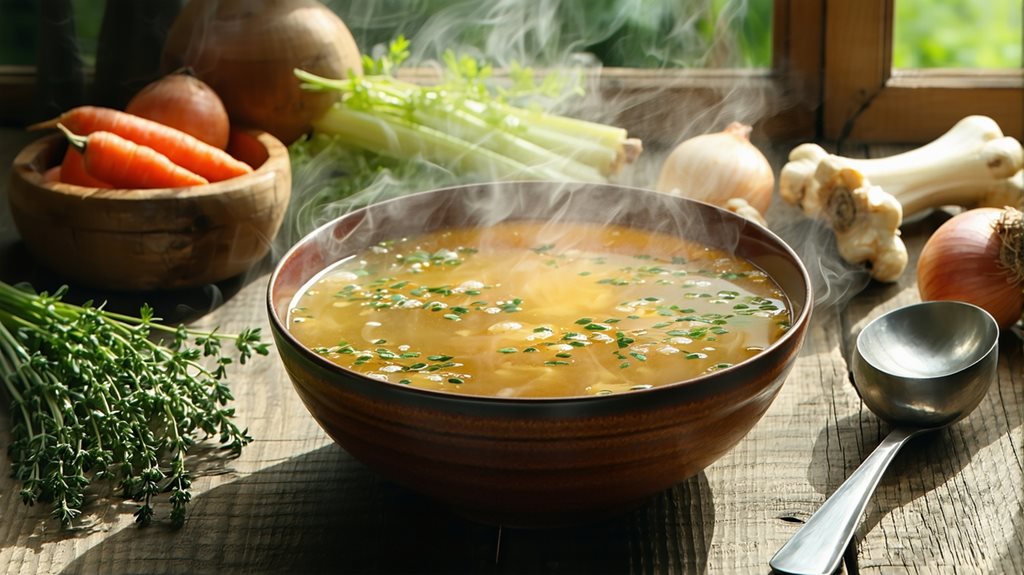When it comes to maintaining your Italian parsley in an Aerogarden, proper pruning is key. You'll want to start by identifying the older, larger leaves at the base, which are ready to be trimmed. This not only helps in managing the plant's size but also encourages new growth, keeping your parsley lush and productive. Make sure you're using clean, sharp scissors to avoid damaging the stems. But there's a common mistake many make during this process that could hinder your parsley's growth rather than helping it flourish. What could this be, you ask? Let's explore what you should avoid to guarantee your parsley thrives.
Key Takeaways
- Gather sharp scissors and sanitize them to ensure clean cuts on the Italian parsley.
- Cut the stems of older, larger leaves near the base to promote new growth.
- Prune every 2-3 weeks, removing weak or overcrowded stems to maintain plant health.
- Dispose of removed stems and leaves to prevent decay and pest issues.
- After pruning, check the Aerogarden's water and nutrient levels to support recovery.
Understanding Italian Parsley Needs
To guarantee the health of your Italian parsley, it's vital to provide ample light, consistent moisture, and regular pruning. You've got to make sure that your plant receives about six to eight hours of direct sunlight daily. If you're using an Aerogarden, the built-in LED lights should suffice, but you'll need to adjust them to mimic natural sunlight cycles closely.
Maintaining consistent moisture is equally important. Italian parsley hates dry soil, so you'll need to check the moisture levels regularly. In an Aerogarden, the system typically manages water levels, but it's wise to keep an eye on it. You don't want the roots sitting in water either, as this could lead to root rot.
Pruning is where you can truly take control. By strategically snipping the older leaves and any overgrowth, you're not only shaping the plant but also stimulating new growth. This practice keeps your parsley lush and productive.
Always use clean, sharp scissors or shears to make precise cuts, which helps prevent damage to the delicate stems.
Timing Your Pruning Sessions
You'll achieve the best results by pruning your Italian parsley every two to three weeks. This regular schedule guarantees that your parsley grows thickly and remains healthy, avoiding overgrowth that can sap energy from the plant and diminish leaf size. By sticking to this timeline, you're in control, promoting vigorous growth and maximizing leaf production.
Consider marking your calendar as a reminder, as consistent timing is crucial to taking charge of your parsley's growth cycle. This isn't just about keeping your garden looking tidy; it's about optimizing the plant's natural growth patterns to yield a more robust harvest.
You'll notice that after each pruning session, your parsley will respond by becoming denser, which in turn encourages a continuous supply of fresh herbs. Remember, the goal here is to enhance the plant's productivity, not just maintain its shape. By controlling when and how often you prune, you're effectively directing the energy of your parsley, ensuring it invests in producing plenty of lush, flavorful leaves rather than unnecessary foliage.
Stay attentive to the growth rate and adjust your schedule if needed. Sometimes, plants may require a slight deviation from the two-to-three-week rule, depending on their vigor and environmental conditions.
Preparing to Prune
Before pruning your Italian parsley, gather all necessary tools including sharp scissors or pruning shears, and make sure they are clean to prevent spreading disease. It's also important to make sure your workstation is well-organized, providing you with easy access to everything you'll need during the process.
You'll want to check the condition of your parsley before you start. Look for any signs of disease or pest damage, as these can influence how and where you prune. It's all about maintaining control over your plant's health and productivity.
Here's a quick guide to get you prepped:
| Tool/Item | Purpose |
|---|---|
| Sharp scissors/shears | Ensures clean cuts that promote healthy regrowth |
| Clean cloth | For wiping blades to keep them clean during pruning |
| Waste bin | Convenient disposal of pruned stems and leaves |
Step-by-Step Pruning Techniques
Start by identifying the older, larger leaves at the base of your Italian parsley plant for removal. These are typically the leaves that have been on the plant the longest and are often less vibrant. By cutting these, you'll not only tidy up the plant but also stimulate new growth which is important for maintaining a healthy and productive Aerogarden.
Here's a concise guide on the pruning process:
- Select the right tool: Use a pair of clean, sharp scissors or pruning shears. This ensures a clean cut that will heal quickly, preventing any potential damage.
- Cut at the base: Aim to make your cuts near the base of the leaf stem, close to the main stem of the plant. This promotes better regrowth and maintains a compact, bushy shape.
- Prune regularly: Regular pruning controls the size of your plant and makes sure it doesn't overshadow other herbs in your Aerogarden.
- Discard old leaves: Remove the cut leaves from the Aerogarden to prevent any decay that might attract pests or disease.
Aftercare Tips
After pruning your Italian parsley, it's essential to focus on proper aftercare to guarantee healthy regrowth. First, you'll want to make sure that the water level in your Aerogarden is ideal. Check that it's neither too high nor too low; maintaining the correct water level is key to providing your parsley with the hydration it needs without risking root rot or dehydration.
Next, adjust the nutrients. Post-pruning, your parsley will benefit greatly from a balanced nutrient boost to support its recovery and new growth. Follow the specific nutrient guidelines provided by your Aerogarden model to ensure you're not over or underfeeding your plants.
It's also important to monitor the lighting. Parsley thrives under a consistent light cycle, so make sure your Aerogarden lights are correctly timed. Ideally, provide your parsley with 14-16 hours of light daily to mimic natural conditions as closely as possible.
Lastly, keep an eye on the growth and health of your parsley. Regularly inspect for any signs of distress such as discoloration or wilting. Addressing these issues promptly allows you to take control and ensures your parsley remains healthy and vibrant.
With these steps, you'll maximize growth and enjoy a bountiful harvest.
Common Pruning Mistakes
Many gardeners inadvertently harm their Italian parsley by over-pruning, which can lead to reduced growth and vigor. It's important you understand the right techniques to maximize your parsley's potential and avoid common mistakes.
Here are key errors you should steer clear of:
- Cutting too close to the base: Never prune right down to the bottom leaves. Leaving a few inches of stem will encourage healthier regrowth.
- Overcrowding plants: If you don't thin out the plants, air circulation suffers and diseases may spread. Give each parsley plant its space.
- Ignoring weak stems: Focus on removing smaller, weaker stems. This directs energy to the stronger, more productive parts of the plant.
- Pruning too frequently: Allow your parsley time to recover and grow between sessions. Overzealous cutting back can stress the plant.





Konnichiwa! (Hello!) I'm Pat Tokuyama, a Japanese tofu cookbook author, who travels for music, food, and adventure. If you like Japanese tea, checkout some of the newestorganic japanese tea, matcha bowls and noren and more!
** Curious about the Plant Based Japanese Cooking Club? ** Learn more here!